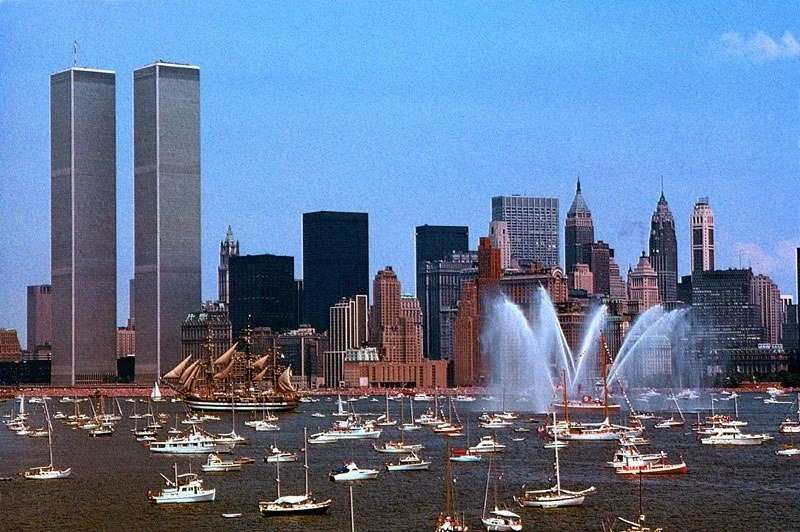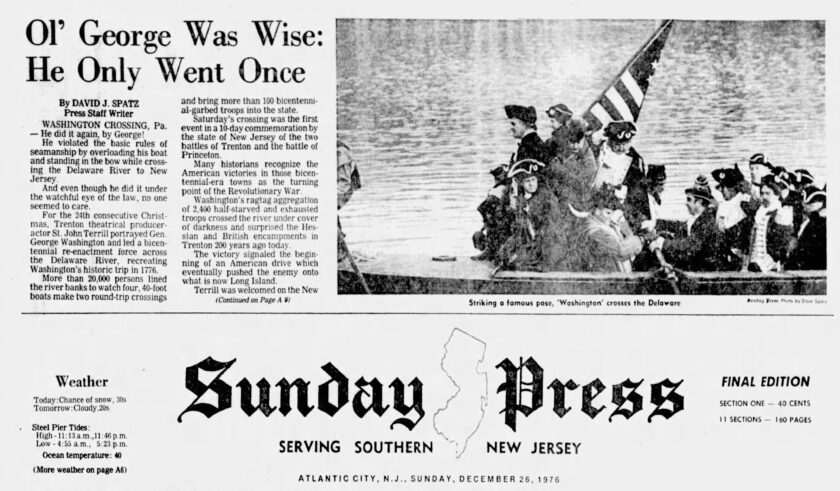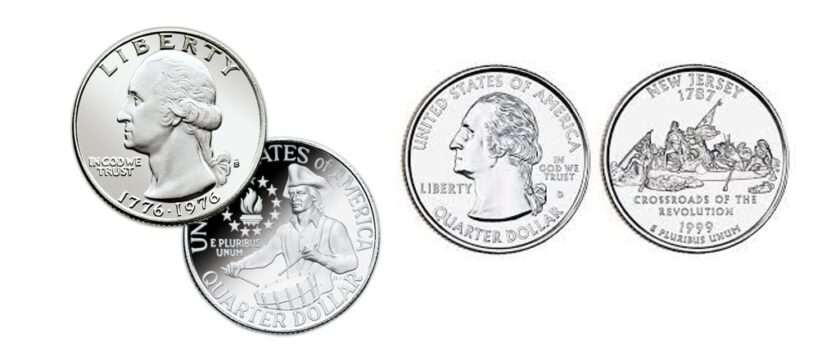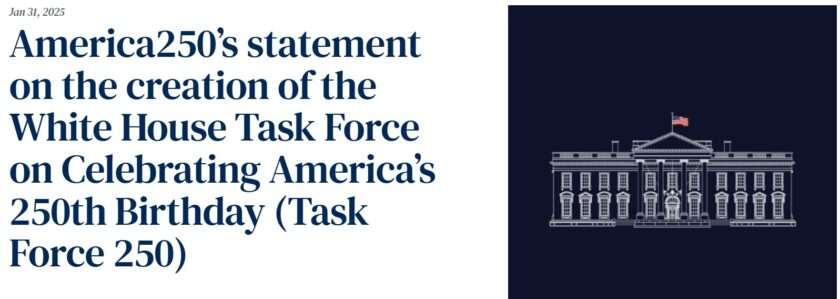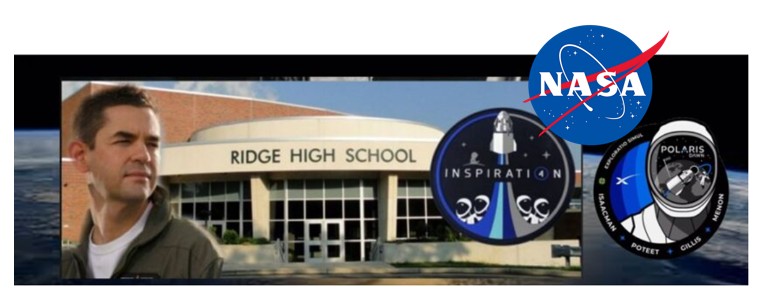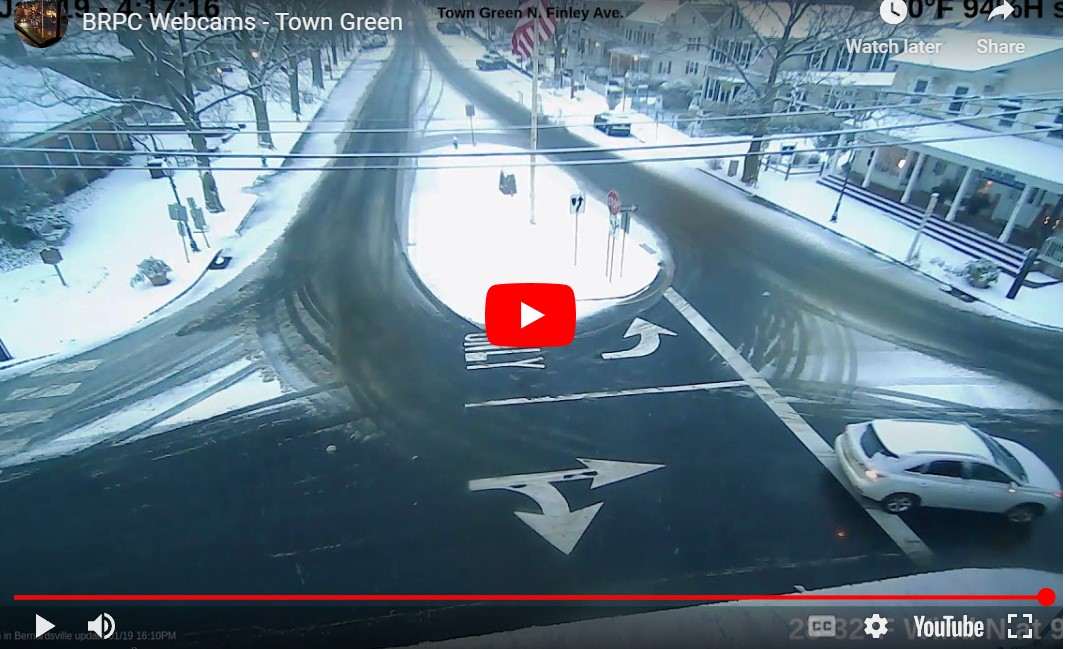
It’s hard to believe that in 2026, the United States will be celebrating its 250th anniversary. That means it’s also been 50 years since the Bicentennial, and hopefully, almost everyone remembers that one. As this researcher was just 14 years old back in 1976, many things came to mind. So, as America starts planning for 2026, we wanted to look back to America’s Bicentennial Celebration……Jersey style.
We love when readers share their memories. Post your favorite bicentennial memory in the comments at the end of this story!
Mr. Local History Project – Preserving and Promoting Jersey history with a social twist!
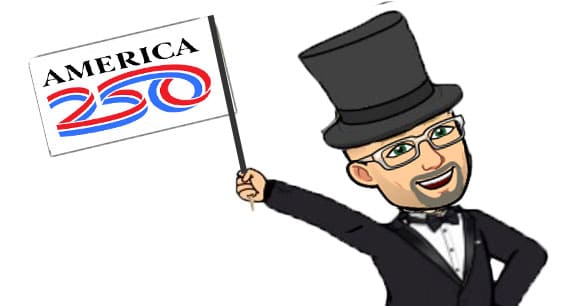
Yes, America will celebrate its 250th anniversary in 2026, and we’re certainly excited. But who wants to return to 1976 in New Jersey and remember some significant events across the Garden State? We DO!
In 1976, the United States celebrated its Bicentennial, marking 200 years since the Declaration of Independence. Given its deep Revolutionary War history, New Jersey played a significant role in the commemoration of the event. These celebrations helped New Jersey highlight its rich Revolutionary War history while uniting the country in a patriotic tribute to 200 years of independence. These celebrations helped New Jersey highlight its rich Revolutionary War history while uniting the country in a patriotic tribute to 200 years of independence.
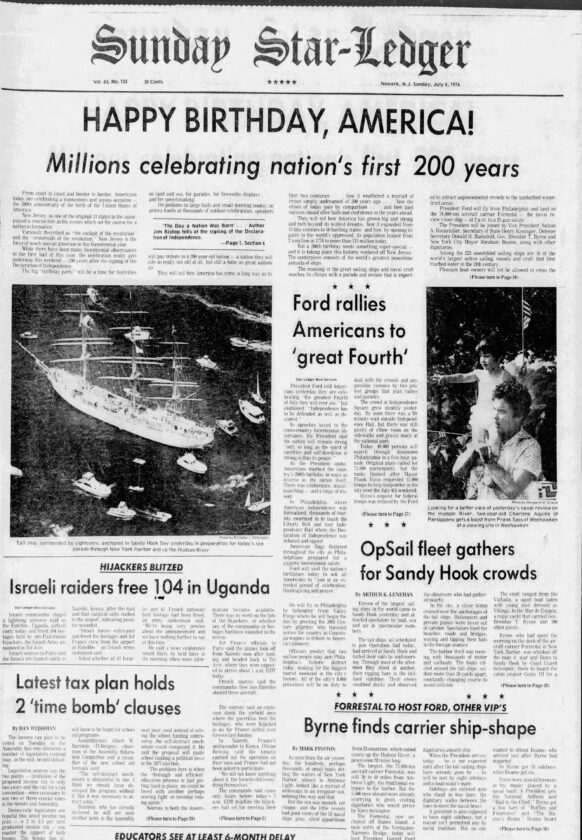
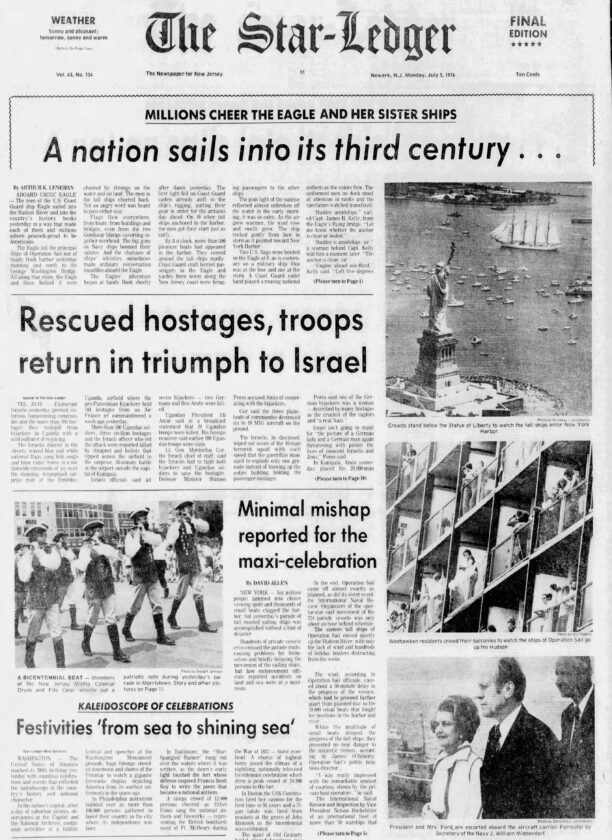
While America’s Bicentennial was at the top of the list, here are a few other fun facts from 1976:
- Jimmy Carter Elected President (November 2, 1976)
- New Jersey’s Governor was Brendan Byrne
- The Concorde Begins Commercial Flights (January 21, 1976)
- Nadia Comaneci Stuns at the Montreal Olympics (July 1976).
- “Rocky” was the top box office movie, taking in over $117 million (December 3, 1976)
- NASA’s Viking 1 Lands on Mars (July 20, 1976)
- Apple Inc. is Founded (April 1, 1976)
- The Cincinnati Reds Beat the Yankees in 4 in a World Series repeat (October 21, 1976). New York Mets finished the season in third place in the National League East with a record of 86–76.
- The New York Giants finished the 1976 season with a 3–11 record and did not qualify for the playoffs.
- “Saturday Night Live” Takes Off (1976 Season)
- Billboard’s #1 song was “Silly Love Songs” by Wings
- Bold colors, flared bell-bottom flared pants, oversized round sunglasses, and a mix of disco-glam vibes were the year’s fashion.
Top10 New Jersey Bicentennial Events
1. Operation Sail (OpSail) (July 4, 1976)
A fleet of tall ships from around the world and U.S. Navy vessels sailed into New York Harbor, visible from the New Jersey shoreline. Operation Sail 1976 (OpSail ’76) was one of the most spectacular events of the United States Bicentennial, held on July 4, 1976. It featured a breathtaking parade of tall ships and naval vessels from around the world sailing into New York Harbor to mark the nation’s 200th anniversary of independence. Millions of spectators lined the shores of New York and New Jersey to witness this historic maritime celebration.
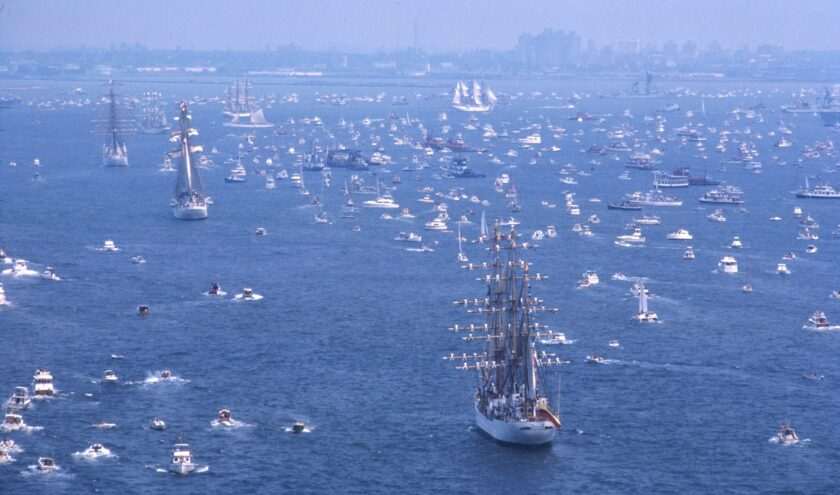
One of the main attractions was the gathering of historic tall ships, including renowned vessels like the USS Eagle (United States), Christian Radich (Norway), Gloria (Colombia), Amerigo Vespucci (Italy), Juan Sebastián de Elcano (Spain), and Dar Pomorza (Poland). Many of these ships were traditional training vessels, some with histories dating back over a century. Their majestic sails and historic designs added to the grandeur of the event.
The celebration also included an International Naval Review, where warships from 16 nations joined the parade. In keeping with tradition, President Gerald Ford reviewed the fleet aboard the USS Forrestal, a U.S. Navy aircraft carrier. This naval review was a tribute to America’s maritime strength and enduring relationships with allied nations.
As the ships paraded through New York Harbor, they passed by the Statue of Liberty, creating a powerful symbol of freedom and international unity. The harbor was filled with thousands of private boats, yachts, and pleasure craft as onlookers tried to get the best view of the historic procession. Later in the evening, a massive fireworks display lit up the sky, accompanied by music, military bands, and cultural performances. Many attendees dressed in colonial-era costumes, further adding to the Bicentennial atmosphere.
The event was broadcast live on national television, making it one of the most-watched moments of the Bicentennial celebrations. Operation Sail 1976 left a lasting legacy, inspiring future OpSail events in 1986, 1992, 2000, and 2012. It remains one of the largest naval gatherings in history and a powerful reminder of America’s maritime heritage and spirit of independence.
2. Bicentennial Wagon Train (Spring-Summer 1976)
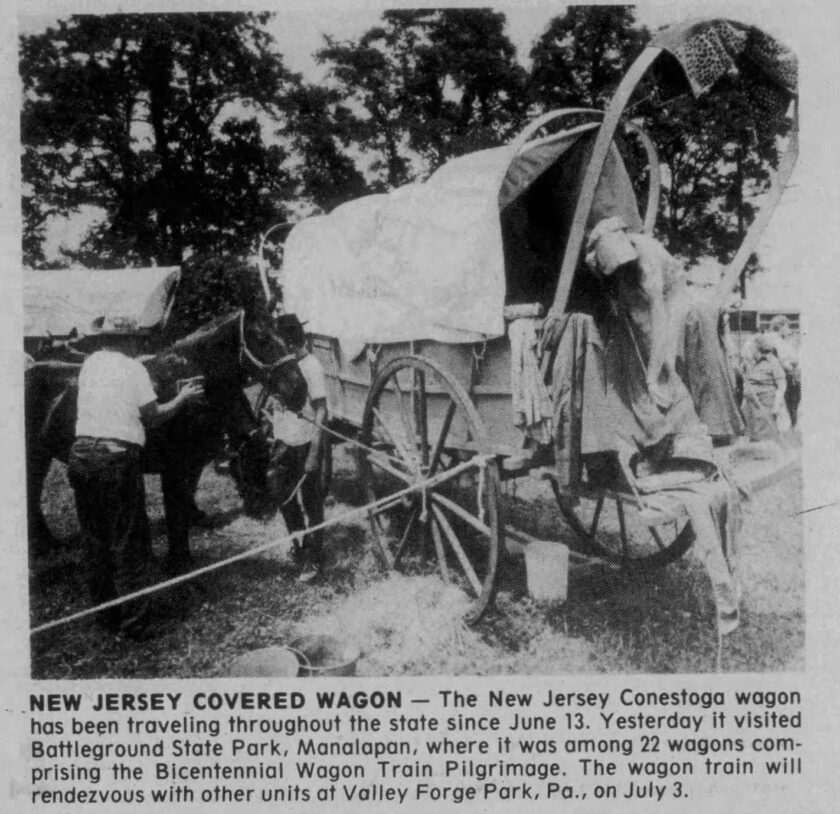
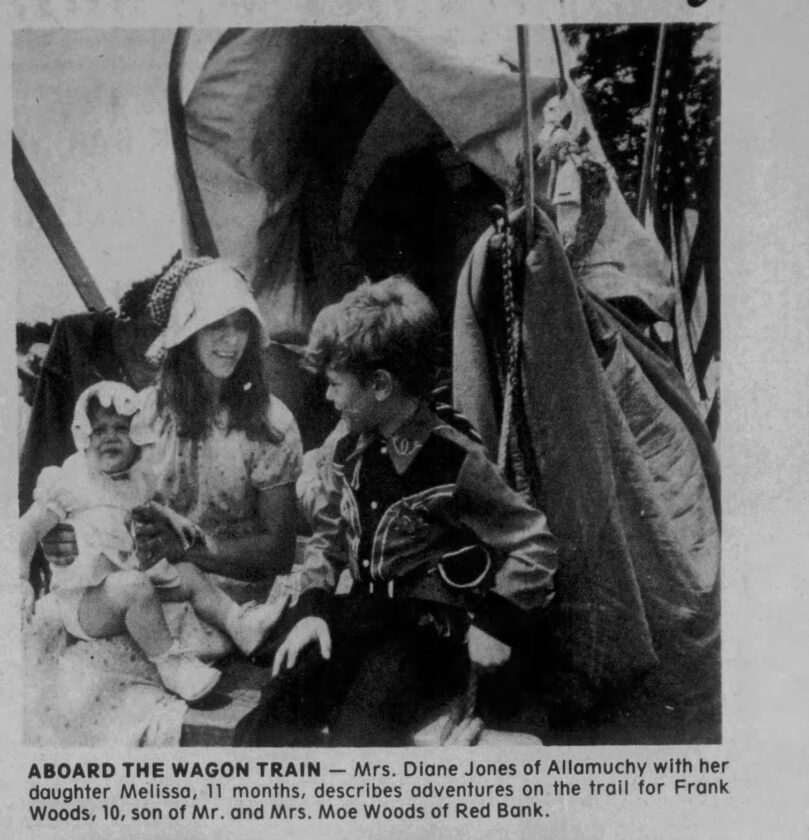
A caravan of covered wagons traveled across the country, retracing routes of early American pioneers and stopping in New Jersey for celebrations and reenactments. The Bicentennial Wagon Train was one of the most ambitious and symbolic events of the United States Bicentennial celebrations in 1976. Designed to recreate the journeys of early American pioneers, the wagon train began in multiple locations across the country. It slowly made its way toward Valley Forge, Pennsylvania, where all the wagons converged on July 4, 1976, to celebrate the nation’s 200th anniversary. The journey covered thousands of miles, with participants traveling in horse-drawn covered wagons just as settlers did in the 18th and 19th centuries.
Throughout the spring and summer of 1976, the wagon train passed through towns and cities nationwide, including many in New Jersey. Along the route, local communities hosted festivals, historical reenactments, and patriotic ceremonies. Participants, many dressed in colonial or pioneer-era clothing, camped along the way, educating the public about early American life. The event was not just a nostalgic tribute but also a way to bring history to life, reminding Americans of the hardships and triumphs of the past. By the time the wagons reached Valley Forge, the journey had become a unifying experience for thousands of participants and spectators, making it one of the most memorable aspects of the Bicentennial celebrations.
3. Jersey Historic Site Revitalizations
Several Revolutionary War sites in New Jersey, including Morristown National Historical Park, Washington Crossing State Park, and Princeton Battlefield, received upgrades, new exhibits, and special commemorative events.
Fort Nonsense at Morristown National Historical Park was restored as part of the United States Bicentennial celebrations. The site, fortified initially during the Revolutionary War under the orders of George Washington, received improvements to reflect its historical significance better. The restoration included clearing overgrowth, installing interpretive signage, and reconstructing some of the earthworks to give visitors a clearer understanding of the fort’s role in the war.
Additionally, efforts were made throughout the park to enhance visitor experiences, including improvements at Jockey Hollow and Washington’s Headquarters at Ford Mansion, ensuring that these critical Revolutionary War sites were preserved and interpreted for future generations.
4. Trenton’s Bicentennial Celebrations
As the site of a key Revolutionary War battle, Trenton hosted parades, reenactments of Washington’s victory over the Hessians, and the opening of new historical markers. The famous Battle of Trenton was commemorated with large-scale reenactments featuring costumed soldiers portraying George Washington’s troops crossing the Delaware River and engaging Hessian forces in downtown Trenton.
The Battle of Trenton, fought on December 26, 1776, was a pivotal victory for General George Washington and the Continental Army during the American Revolutionary War. At the time, the revolution was in serious jeopardy. After multiple defeats in New York, Washington’s forces had been forced to retreat across New Jersey, eventually making camp on the Pennsylvania side of the Delaware River. Morale was dangerously low, and many soldiers’ enlistments were set to expire at the end of the year. Desperate for a victory to revive the cause, Washington devised a daring plan: a surprise attack on the Hessian garrison stationed in Trenton.
On Christmas night, December 25, 1776, despite a powerful snowstorm, Washington led 2,400 troops across the icy Delaware River in what would become one of American history’s most famous military maneuvers. The treacherous crossing took longer than expected, but by early morning on December 26, the Continental Army marched toward Trenton in two columns. The Hessian soldiers, German mercenaries fighting for the British, were utterly unprepared for the assault. Led by Colonel Johann Rall, the Hessians had been celebrating Christmas the night before and were caught off guard when Washington’s forces stormed the town. After about an hour of fierce fighting, the Americans overwhelmed the Hessians, forcing them to surrender.
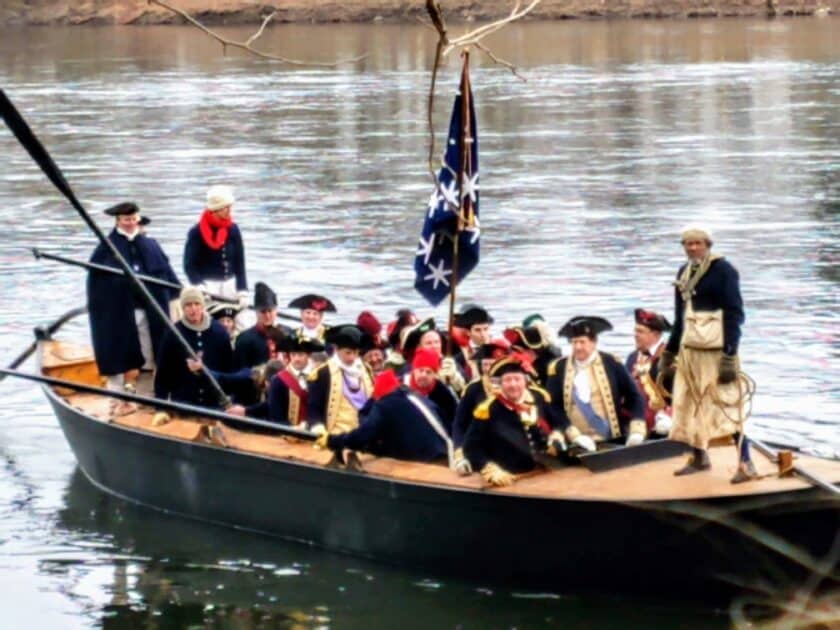
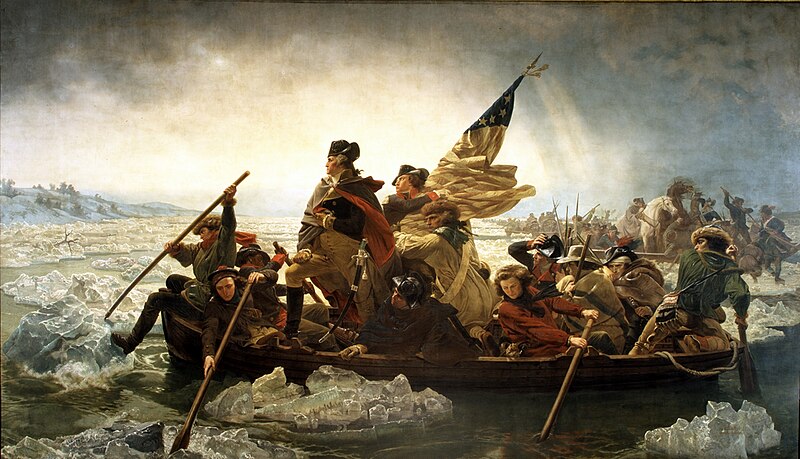
The victory at Trenton was a turning point in the war. The Americans killed or wounded around 100 Hessians and captured nearly 900, along with their weapons and supplies. In contrast, the Continental Army suffered only five wounded soldiers, one of whom was future President James Monroe. This triumph provided a much-needed boost in morale, encouraging many soldiers to reenlist rather than leave the army.
Additionally, several historic locations, including the Old Barracks Museum, underwent restorations to restore their Revolutionary War-era appearance. The Old Barracks also hosted special exhibits and living history programs.
5. Liberty State Park Fireworks and Celebrations
Jersey City’s Liberty State Park held a massive fireworks display, with thousands gathering to celebrate with concerts, food festivals, and historical exhibits. The fireworks display on July 4, 1976, was a spectacular and historic event that marked the United States Bicentennial celebrations. As part of the nationwide festivities celebrating the 200th anniversary of American independence, Liberty State Park in Jersey City, New Jersey, became the backdrop for one of the country’s largest and most memorable fireworks displays. The night sky was lit in a stunning array of colors and patterns, with the Statue of Liberty and Ellis Island standing proudly in the background.
6. American Freedom Train
A special train carrying artifacts from U.S. history, including a copy of the Declaration of Independence and other national treasures, made stops in New Jersey, attracting large crowds. In August 1976, the American Freedom Train made several stops in New Jersey as part of the nationwide Bicentennial celebration. The train, which traveled across all 48 contiguous states, carried a collection of historic artifacts, documents, and exhibits showcasing American history. Millions of visitors had the opportunity to step aboard and view treasures such as the Declaration of Independence, the Bill of Rights, and other significant memorabilia from the nation’s past.
During its journey through New Jersey, the train made stops in Jersey City from August 6 to 8, Morristown from August 10 to 12, Trenton from August 13 to 15, and Camden from August 17 to 19. At each location, large crowds gathered to experience this traveling exhibition, which provided a unique way to reflect on 200 years of American independence. The train was a major highlight of the Bicentennial festivities, reinforcing national pride and historical awareness across the nation.
7. Revolutionary War Reenactments at Monmouth Battlefield
New Jersey’s many battlefields, such as Monmouth Battlefield State Park, hosted live reenactments of key battles from the Revolutionary War. The Battle of Monmouth, fought on June 28, 1778, was one of the most significant battles of the American Revolutionary War and took place in what is now Monmouth Battlefield State Park in New Jersey. General George Washington saw an opportunity to strike after the British evacuated Philadelphia and began marching toward New York. He ordered an attack on the British rear guard, led by General Sir Henry Clinton, as they moved through the sweltering summer heat. Initially, General Charles Lee led the American advance but ordered a retreat after encountering strong British resistance. This disorganized withdrawal nearly became a disaster until Washington arrived, rallied the troops, and reorganized the American lines.
The battle turned into an intense, day-long fight in extreme heat, with both sides suffering from casualties due to combat and heat exhaustion. Washington’s leadership helped stabilize the American position, and the Continental Army stood its ground against the British forces. By the end of the day, both sides were exhausted, and the British withdrew under the cover of night, continuing their march to New York. Though the battle was tactically inconclusive, it was seen as a strategic victory for the Americans, as it proved that Washington’s army—newly trained at Valley Forge—could stand toe-to-toe with British regulars in open battle. Today, Monmouth Battlefield State Park preserves the site of this pivotal conflict, offering visitors the opportunity to explore the battlefield and learn about a crucial moment in the fight for American independence.
8. Newark‘s Bicentennial Parade
Newark held one of the largest Bicentennial parades in New Jersey, featuring floats, marching bands, and historical reenactors. The Bicentennial Parade in Newark was one of the city’s largest and most patriotic celebrations, marking 200 years of American independence. Thousands of spectators lined the streets to witness a vibrant display of marching bands, historical reenactors, military units, and colorful floats that paid tribute to the nation’s past.
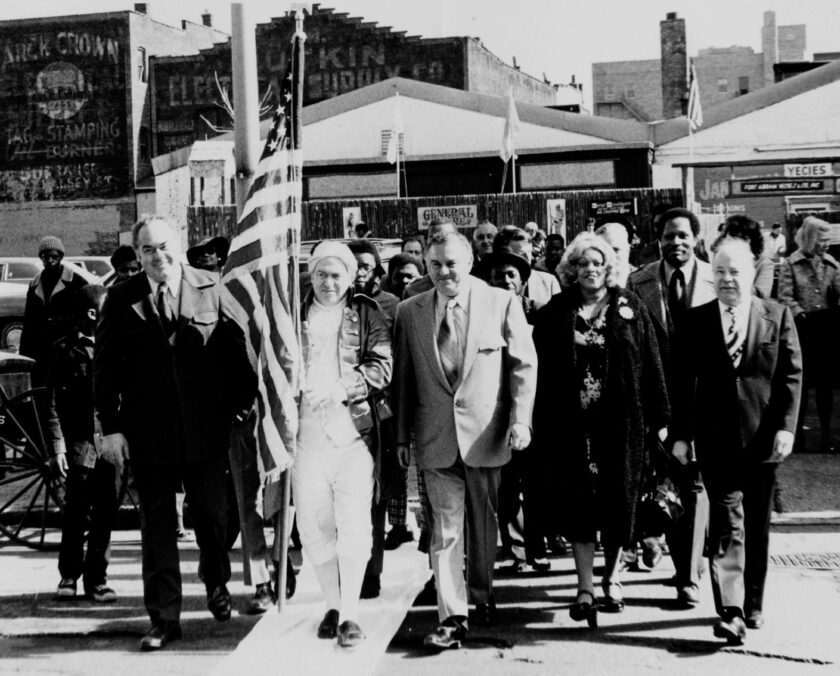
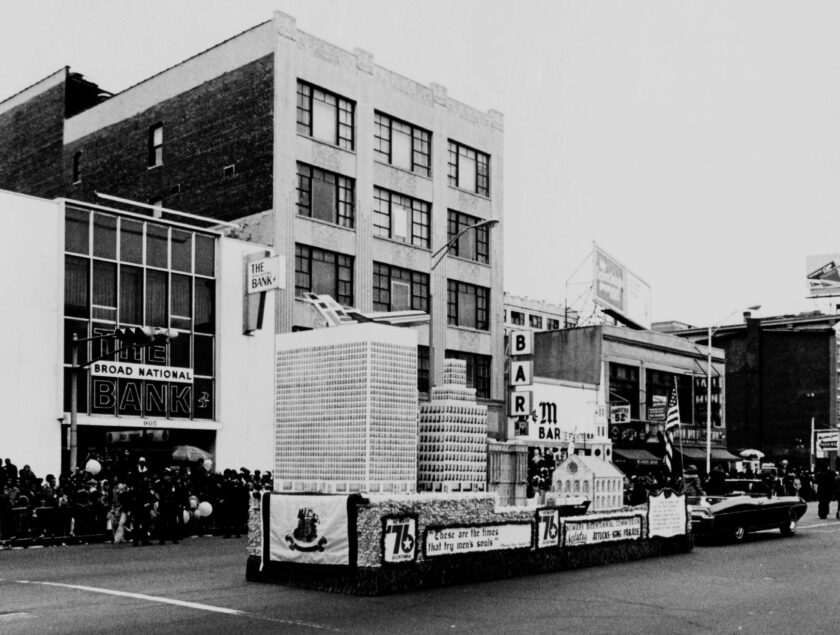
The parade featured local organizations, school groups, veterans, and civic leaders coming together to celebrate Newark’s role in American history. A special focus was placed on New Jersey’s contributions to the Revolution, with participants dressed as Revolutionary War soldiers, colonial figures, and even George Washington himself.
9. Rededication of Trenton’s Old Barracks
The historic Old Barracks Museum, which housed soldiers during the Revolutionary War, was restored and reopened with new exhibits on New Jersey’s role in the conflict.
Initially constructed in 1776 as a military outpost, the barracks housed Continental Army soldiers during key moments of the war. Following the Battle of Trenton on December 26, 1776, the barracks became a crucial site for the American forces, particularly during the winter of 1776-1777. The Trenton victory boosted the Continental Army’s morale and solidified George Washington’s leadership.
10. Bicentennial Coins and Stamps
New Jersey residents collected Bicentennial quarters (featuring a drummer boy on the back) and commemorative stamps that honored the state’s contributions to the nation’s founding. However, it wouldn’t be until 1999 that New Jersey received its own quarter, featuring General Washington crossing the Delaware, but the statewide quarter craze began in 1976 following the Bicentennial release.
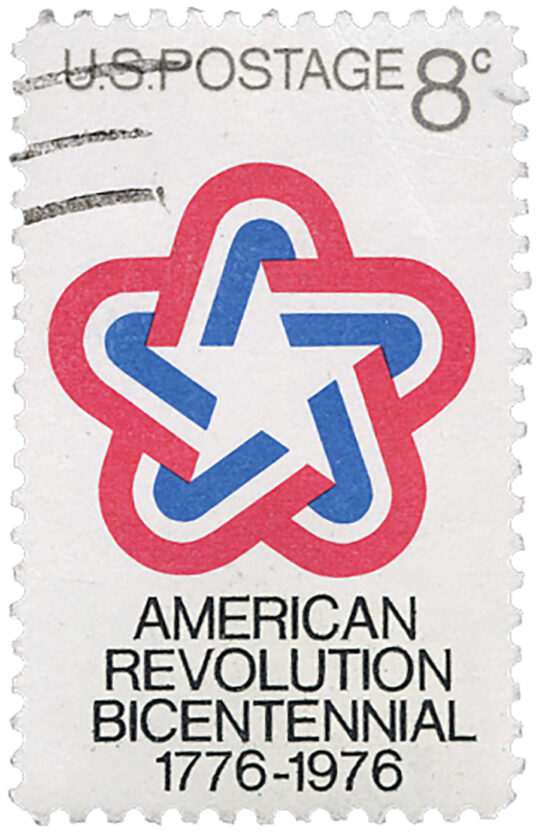
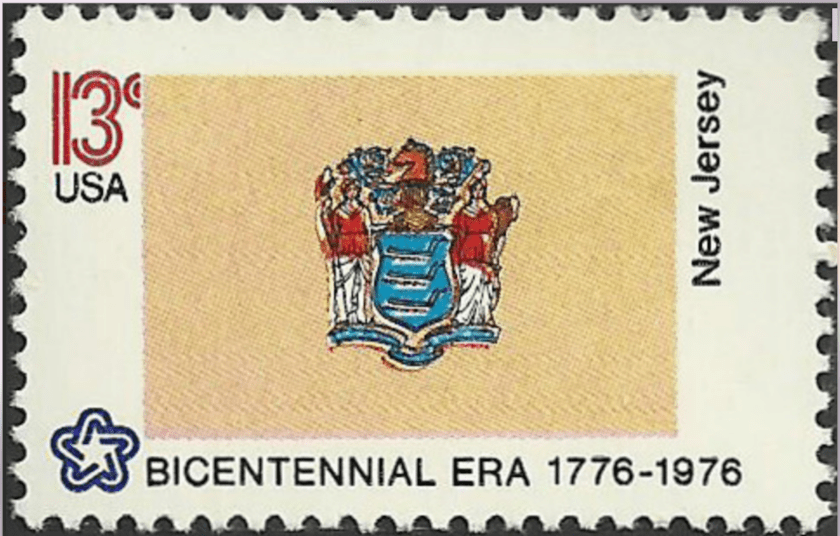
In 1973, the United States Postal Service issued a call for stamp designs to commemorate the 200th anniversary of American independence in 1976. The Bicentennial Stamp, issued in 1975, was designed by Douglas M. West, an artist and graphic designer from New York City. West’s design featured the Liberty Bell and a 13-star flag, symbolizing the original thirteen colonies, with the red, white, and blue color scheme reflecting the patriotic spirit of the Bicentennial. His artwork and the stamp became an iconic part of the yearlong celebrations.
2026 Plans and the 250th American Anniversary
It’s called a Semi-quin-centennial in case you need to know……

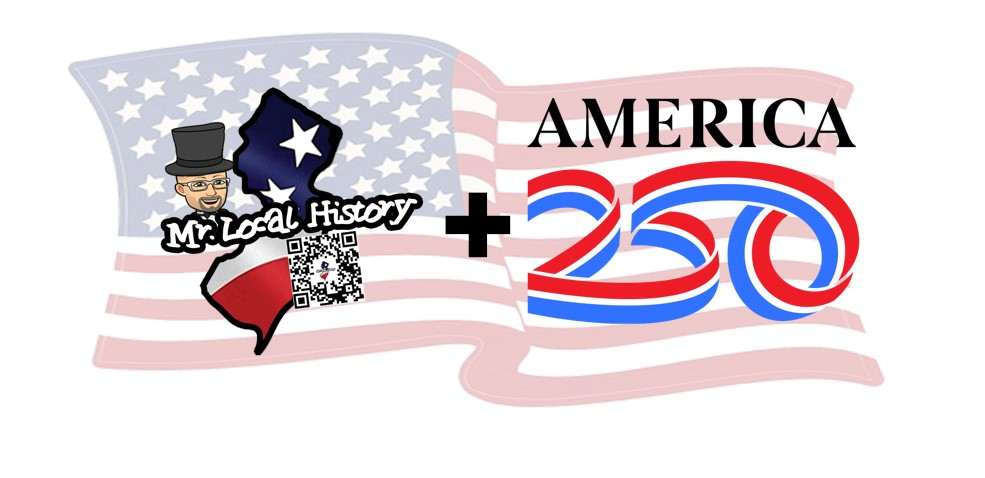
As the United States approaches its 250th anniversary in 2026, New Jersey is preparing a series of events to commemorate its significant role in the American Revolution. It seems to be looking a lot like 1976, right?
Here are some of the top planned events:
- Sail 4th 250 – International Parade of Tall Ships and Naval Vessels (July 3-8, 2026): The Port of New York and New Jersey will host a monumental gathering of international tall ships and naval vessels, featuring an International Naval Review, aerial displays led by the Blue Angels, and various festivities along the harbor. Sail4th 250, the non-profit organization leading the charge, today revealed more details about what’s in store for the region from July 3-8, 2026. The six-day centerpiece of America’s Semiquincentennial will feature the largest international flotilla of tall ships and naval vessels ever assembled. Nearly a dozen nations have already committed their tall ships to participate in the festivities, and the U.S. Navy has invited scores of others. More than 30 tall ships are expected
- Battle of Princeton Re-enactment (January 5, 2026): A re-enactment of the Battle of Princeton will take place, accompanied by enhanced interpretive displays that will educate visitors about this pivotal conflict.
- Monmouth Battlefield State Park Commemorations: Special events are planned at Monmouth Battlefield State Park to honor the Battle of Monmouth, a significant engagement during the Revolutionary War.
- Washington Crossing State Park Events: Commemorative activities will be held at Washington Crossing State Park, marking General George Washington’s historic crossing of the Delaware River.
- Trenton’s Old Barracks Celebrations: The Old Barracks in Trenton will host events highlighting its role during the Revolution, offering insights into 18th-century military life.
- Time Capsule: A collaboration involving all 50 states, five territories, and the District of Columbia to collect items for a time capsule to be buried in Philadelphia on July 4, 2026.
- Sparta’s RevolutionNJ 250 Celebration: Sparta Township is organizing various activities, including historical recognitions, art displays, and educational programs, to honor its local heritage during the semi-quincentennial.
- Monmouth County Celebrations: Monmouth County is planning a series of events to commemorate its significant role in the fight for independence, with a focus on its rich Revolutionary War history.
- Statewide Educational Programs: RevolutionNJ is collaborating with communities across the state to create programs that engage the public with New Jersey’s Revolutionary history, emphasizing its diverse stories and lasting impact.
- Historical Site Enhancements: Various historic sites throughout New Jersey are enhancing their exhibits and interpretive displays in preparation for the 250th anniversary, providing deeper insights into the state’s Revolutionary past.
- Inclusive Historical Narratives: Efforts are underway to highlight the contributions and experiences of often-overlooked groups during the Revolution, ensuring a comprehensive and inclusive commemoration.
These events honor New Jersey’s pivotal role in the nation’s founding and provide residents and visitors with meaningful ways to engage with history.

